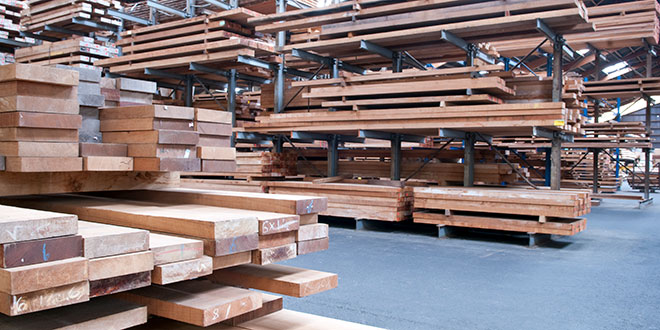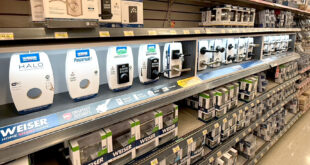A lumberyard can be a loud, chaotic place. Whether it’s builders making an emergency run for supplies or a dozen DIYers reviewing options for their latest backyard project, the space can quickly become frenetic. Lumberyard efficiency becomes even more important because customers often peruse the same space where forklifts and other machinery are being operated.
Lumberyards are safer and more profitable when they are efficient. To enhance your lumberyard efficiency, look over your operation with a careful eye for training, safety, selection and planning. Focusing on these areas can make your customers happy and efficient themselves, getting them into your yard and back out with the building supplies they wanted and with minimum fuss and hassle.
1. Training
Anyone working around the heavy materials and machinery found in a lumberyard should be fully trained up on a store’s procedures for locating, moving and selling inventory. If an employee is searching for a specific piece of lumber for a customer, that customer might become frustrated with the delay. This situation also means lumberyard workers need to be familiar with the terminology of builders, including different materials of lumber, cut sizes and applications to streamline service.
Training also extends to the use of heavy equipment, such as forklifts. Not every yard employee needs to be certified on this equipment, but enough workers need that certification to have enough employees available for customers as they move in and out of your lumberyard. This training should be ongoing to help maintain a culture of safety around heavy equipment and ungainly lumber products.
2. Maintenance
Maintenance in the lumberyard goes beyond just the machinery, though the heavy equipment does need to be consistently maintained and kept in good working order. Since lumber products are often kept outdoors, they can be exposed to inclement weather as well as normal wear and tear from traffic moving around them. The paths between lumber stacks, whether they’re made of concrete, sand or gravel, need to be maintained properly to make sure equipment can move over them quickly, safely and without disturbing the stacks.
Uneven sections of the yard can damage forklifts and cause expensive products to be jostled loose. They can also be a hazard for customers and employees moving their own lumber through a yard. If a cart can’t safely maneuver from the back of the yard to the checkout area, the problem areas need to be a priority.
3. Planning Ahead
Lumberyard efficiency can be improved in a number of areas, but many of them can be best taken advantage of with prior planning. This can mean learning from your customers about product demand (reducing the number of special orders), tracking active projects among your professional customers (bringing in necessary products before they’re needed) and plotting out the most efficient routes among job sites (shorterning delivery times).
As with so many things in retail, improving lumber efficiency can come down to listening to customers and anticipating their needs. If you’re serving a largely DIY customer base, having smaller cuts and easy access to your lumber is key. If you’re serving large commercial interests, being able to move volume efficiently and safely is the name of the game.
 Hardware Retailing The Industry's Source for Insights and Information
Hardware Retailing The Industry's Source for Insights and Information






